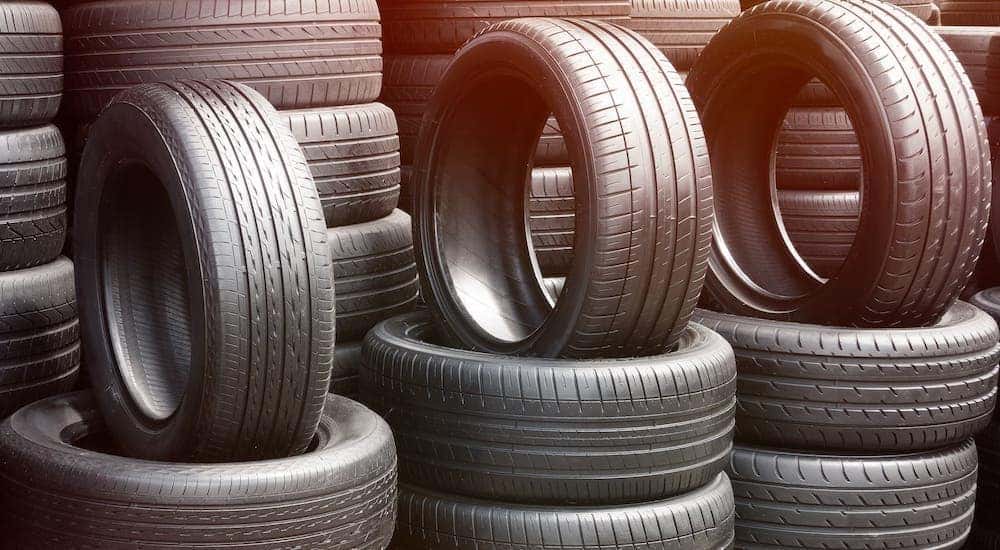Ideal Bargains on Discount Tires Morris IL: High Quality Tires at Affordable Costs
Ideal Bargains on Discount Tires Morris IL: High Quality Tires at Affordable Costs
Blog Article
Tire Service: The Impact of Weather Conditions
When it comes to making sure optimum efficiency and safety and security on the road, recognizing the impact of weather on tire solution is important. From scorching warmth to icy roads, each weather component can significantly influence tire capability and total driving experience. By delving right into the impacts of differing climate condition on tires, motorists can obtain valuable insights that may improve their car's performance and durability. In this discussion, we will certainly check out the intricate relationship between climate conditions and tire solution, clarifying the importance of weather-specific tire maintenance practices and considerations.
Warm and Tire Efficiency
When exposed to high temperatures, tires experience changes in efficiency that can significantly affect vehicle safety and handling. The warmth created from extended driving or heat problems causes the tire rubber to soften, resulting in reduced tread life and increased wear. As the rubber comes to be softer, the tire's grasp when driving decreases, affecting braking distances and total grip. In extreme instances, too much warm can even create tire blowouts, presenting a serious security risk to the lorry and its passengers.
Moreover, high temperature levels can speed up the process of tire aging, creating the rubber to weaken faster. This can cause splits, bulges, and various other forms of damages that jeopardize the architectural integrity of the tire. To minimize the effects of warm on tire efficiency, chauffeurs need to consistently check their tire stress, revolve tires to ensure even use, and examine for any kind of indicators of damage. Additionally, utilizing tires specifically designed to hold up against heats can assist maintain optimal efficiency and safety when driving.
Cold Weather Impacts
Cold weather condition conditions can have a considerable effect on tire performance and safety. In cool climate, tires might additionally shed air pressure more swiftly, which can influence handling and gas effectiveness.
To reduce the effects of cool climate on tires, it is crucial to routinely examine tire pressure and inflate them to the manufacturer's advised degrees. Utilizing winter season or all-season tires made for winter problems can additionally improve traction and grasp on icy or snowy roads - morris tire and alignment. Proper tire upkeep, including routine examinations for wear and damage, comes to be a lot more important throughout chillier months to ensure optimum performance and security
Rainy Issues Effect
Tires with worn-out footsteps are more vulnerable to hydroplaning, where a layer of water constructs up between the road and the tire surface area, leading to loss of traction. To battle this, motorists need to consistently examine their tires for appropriate walk deepness and think about spending in tires especially created for wet problems.

Snow and Tire Safety
Snow-covered roads pose one-of-a-kind challenges for drivers, highlighting the importance of correct tire choice and upkeep. When driving in snowy problems, having the best tires can make a considerable difference in safety and security and performance. Wintertime tires are made with special rubber compounds and step patterns to offer better traction on snow and ice contrasted to all-season tires. The deeper footsteps and sipes of winter tires aid grip the road better, minimizing the risk of gliding and sliding.
In enhancement to using winter tires, it is important to guarantee they are correctly blown up. Cold weather condition can create tire stress to drop, impacting grip and find out this here handling (mopar tire service specials). Regularly inspecting and maintaining the right tire stress is crucial for ideal performance in snowy conditions

Weather-Related Tire Maintenance
When confronted with various weather here are the findings problems, proper tire maintenance comes to be a crucial element of vehicle safety and security and performance. Weather-related tire upkeep includes an array of techniques intended at ensuring optimum tire feature and long life in different weather condition circumstances. One essential element of weather-related tire maintenance is tire pressure guideline. Changing temperatures can cause tire pressure to differ, impacting traction and gas efficiency. Frequently checking and changing tire stress according to maker referrals is vital for safe driving in altering weather. In addition, tire step deepness plays a significant duty in managing different weather condition components. Tires with sufficient step depth give much better grasp on damp or icy roads, reducing the threat of hydroplaning or skidding. Examining tire step consistently and changing tires when step wear reaches a certain depth is essential for preserving traction and stability in adverse weather. By prioritizing weather-related tire maintenance, drivers can enhance security, boost vehicle efficiency, and prolong the life expectancy of their tires.
Conclusion
In final thought, climate problems have a significant effect on tire efficiency and security (tires morris il). From warmth affecting tire pressure and use to chilly weather condition lowering traction, it is important to think about the weather condition when keeping and utilizing tires.
In this conversation, we will certainly discover the detailed relationship between weather problems and tire solution, losing light on the image source importance of weather-specific tire maintenance practices and considerations.

Report this page